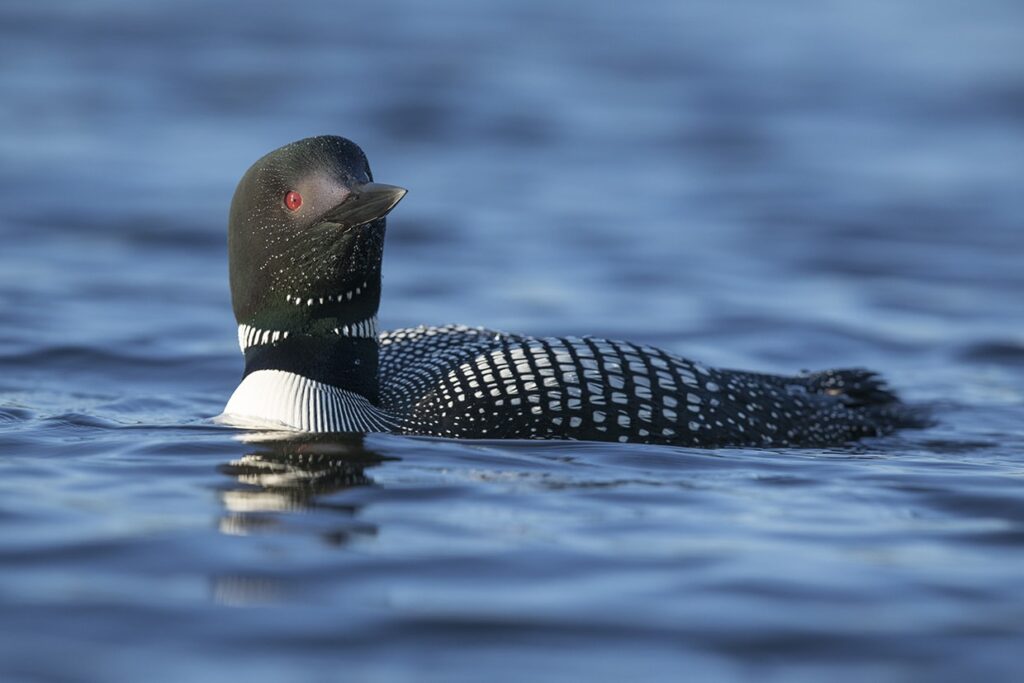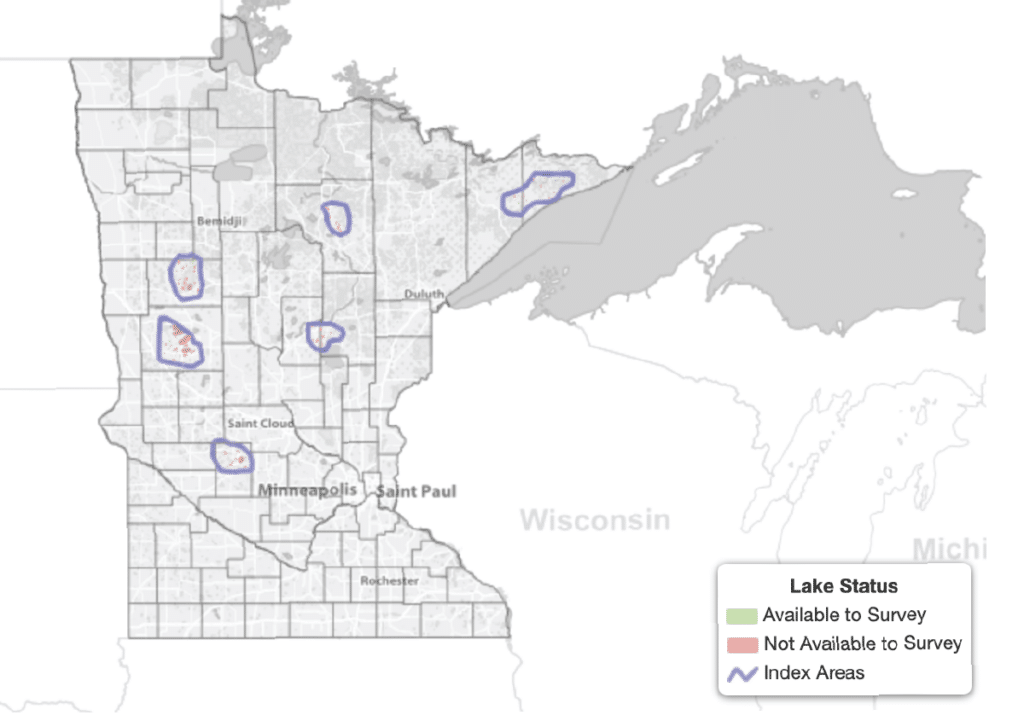
Approximately 12,000 common loons inhabit Minnesota during the summer months. Environmental and state organizations are offering the public opportunities to learn about and monitor loons. The Minnesota DNR will host a webinar in early July focused on conservation efforts. In addition, the Minnesota Loon Monitoring Program seeks volunteers to help count loons between June 28 and July 8.
Volunteer monitoring
The monitoring program, initiated by the DNR, seeks volunteers to count loons across six regions within the state. This includes bodies of water within the Superior National Forest (SNF). Volunteers will visit specific lakes each morning for 10 days to count loons. They will then submit the data to the DNR. According to the agency, the survey aims to “capture valuable information on loon phenology, nesting behavior, breeding productivity, unique behavior occurrences, and potential threats to loons.”
According to an article in the Duluth News Tribune, “participation has been down since the pandemic and hasn’t rebounded yet.” As a result, the DNR is focused on spreading awareness and new volunteers.

Icon of the north
Loons serve as indicators of good water quality. They are sensitive to disturbance and lakeshore development and require clean, clear water for nesting and feeding. With chicks appearing mid-late June, nests are usually located in protected spots along shorelines.
Minnesota’s state bird, the common loon, is better adapted to water than land. Its streamlined body enables strong underwater swimming, allowing it to stay submerged for up to five minutes. Food sources include fish, frogs, leeches, crayfish, and insects.
The state hosts more common loons than any other state except Alaska. In September, adult birds migrate to their winter grounds along the Atlantic coast, while juvenile loons migrate a month later.
The beautiful yet haunting calls of the loon alert others of their presence by making four basic types of vocalizations: the wail, tremolo, yodel, and hoot. During the soft-water season, most paddlers can expect to see a pair or two on some of the larger northern lakes.

Loon conservation efforts
There are growing concerns that loons will no longer summer in Minnesota as soon as 2080 because of the changing climate. The National Audobon Society’s climate model indicates that the loon may lose 56% of its current summer range and 75% of its current winter range.
Jayden Jech, a loon specialist and leader of the Minnesota Loon Restoration Project, is hosting a webinar on conservation efforts for the loon on July 3rd. Participants will gain insight into the restoration project, collaborative community science efforts, and strategies for “Being Loon Aware” on regional lakes.
Similarly, environmental programs also offer private landowners and outdoor enthusiasts opportunities to learn about and monitor loons. Topics include shoreline development, aquatic invasive species, best boating and fishing practices, and loon nesting.
Boaters can help by giving loons plenty of space. Chicks cannot dive when they’re very young and tire easily. When fishing, disposing of fishing lines and using nonlead tackle can reduce the risk of injury to birds.
More info:
- More volunteers needed for annual Minnesota loon survey – Duluth News Tribune
- Minnesota Outdoor Skills and Stewardship Series – MNDNR
- About Loons & Stewardship Opportunities – National Loon Center

Wilderness guide and outdoorswoman Pam Wright has been exploring wild places since her youth. Remaining curious, she has navigated remote lakes in Canada by canoe, backpacked some of the highest mountains in the Sierra Nevada, and completed a thru-hike of the Superior Hiking Trail. Her professional roles include working as a wilderness guide in northern Minnesota and providing online education for outdoor enthusiasts.

